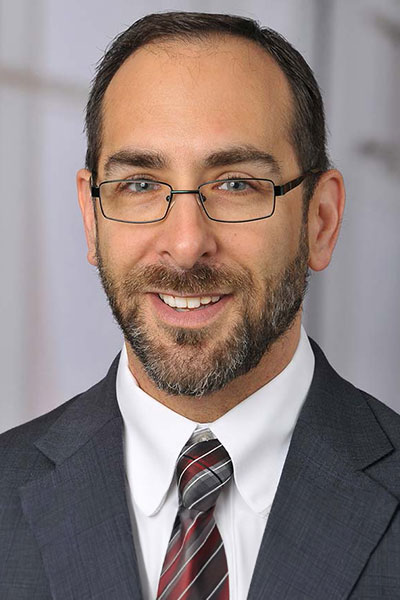Clinical understanding and approaches to pulmonary fibrosis (PF) have changed significantly since the first puzzling cases were described in 1935, and recent advancements are setting the stage for improved management of the disease.

Jeffrey C. Horowitz, MD, FCCP, Professor and Division Director of Pulmonary, Critical Care, and Sleep Medicine, The Ohio State University, opened the CHEST 2023 session, Future Directions in Pulmonary Fibrosis, on Tuesday, October 10, with a look at just how far the field has come.
Those first four cases almost a century ago sound familiar: inflammation, fibroblast proliferation, spatial heterogeneity, and pulmonary hypertension. Over the decades, the understanding of the disease slowly evolved, but, as recently as 2000, one published recommendation suggested treatment for idiopathic pulmonary fibrosis (IPF) that was based on what Dr. Horowitz called “a ‘we might as well try it’ attitude” and was later discovered to have worse outcomes than placebo.
More recent work has built on discoveries in cell and molecular biology, leading to the recognition of the epithelial-mesenchymal model—a vicious cycle of injury-triggering aberrant interactions between epithelial and mesenchymal cells that then perpetuates aberrant wound repair response. The driving role of the cellular matrix emerged, along with the importance of senescence. The current understanding is a complicated relationship of factors, Dr. Horowitz said, and omics and bioinformatics will likely continue to push ideas further.
“We need to keep moving forward. Our patients need it. We need to get better, and we are getting better,” Dr. Horowitz said. “We have a very rich pipeline that’s continuing to grow. If nothing else, we’ve learned that we can do studies, we can do them well, and we can demonstrate changes and modification in the natural history of diseases that are killing our patients.”
Genetic testing in PF
Familial links to PF have been noted for years, but it took the advent of genome-wide association studies to turn observational associations into genetic links with discrete markers that can be identified.

“Genetic testing can play a crucial role in predicting disease progression for patients with pulmonary fibrosis and potentially can help us tailor treatment strategies as well,” said Deji Adegunsoye, MD, PhD, FCCP, Assistant Professor of Medicine and Scientific Director of the Interstitial Lung Disease Program, University of Chicago.
The mortality rate from PF has doubled and tripled in recent decades, Dr. Adegunsoye said, which makes genetic predisposition and genetic testing increasingly important in clinical practice. About 30 gene variants are currently linked to PF susceptibility, lung function decline, and survival.
An approved interstitial lung disease (ILD) biomarker based on transcriptomic analysis of transbronchial biopsy tissue can increase IPF diagnostic confidence and may predict progression, he said. Specific TOLLIP gene variants are associated with benefit and harm from the same N-acetylcysteine therapy.
Extremely short telomere length (TL < 10th percentile) can predict harm from combined immunosuppression, as was seen in the PANTHER trial. Patients with fibrotic hypersensitivity pneumonitis and TL above the first quartile may have improved survival with mycophenolate, while short TL is associated with worse survival and a need for more intensive immunosuppression following lung transplantation.
Current and future treatments

For now, the antifibrotics nintedanib and pirfenidone are the only approved therapies for IPF, and their effect is modest at best, said Tejaswini Kulkarni, MD, MPH, FCCP, Director of the Interstitial Lung Disease Program, The University of Alabama at Birmingham. Other agents are in clinical trials for IPF and non-IPF ILDs, but drug development for PF is challenging.
“There are many questions around what therapeutic targets do we choose, therapy modalities, combination therapies, trial endpoints, patient-related factors, acute exacerbations, and biomarkers,” said Dr. Kulkarni, who is also on the steering committee for the Bridging Specialties™: Timely Diagnosis for ILD initiative from CHEST and Three Lakes Foundation.
The many problems encountered in the traditional approach in ILD, parallel randomized controlled trials that evaluate a single investigational product, have prompted consideration of alternative study designs.
One of the most promising is REMAP, randomized trials that are embedded in clinical practice using a multifactorial approach with an adaptive platform. REMAP evaluates multiple agents, discarding agents that appear to be less effective and adding new candidates as they appear. The approach has been used successfully in community-acquired pneumonia and SARS-CoV-2 infection.
Going forward, a focus on precision medicine—biomarkers, genotypes, phenotypes—will be important, she said. In the meantime, data from early-phase studies provide hope that a new wave of antifibrotic treatments will reach the clinic sooner rather than later.
“The question is, can we move beyond just slowing down the disease progression to actually saying we can now reverse this disease?” Dr. Kulkarni said. “That’s the future.”
For tools and insights that you can use in your daily practice to shorten the time to diagnosis for patients with ILD, access CHEST’s ILD Clinician Toolkit.
Join us at CHEST 2024
Connect in person with influential clinicians from around the world—and attend top-tier educational sessions focusing on the most relevant clinical topics. CHEST 2024 will have it all, including optional add-on sessions to customize your learning. Reserve your spot today, and save $100 when you register by September 22.





